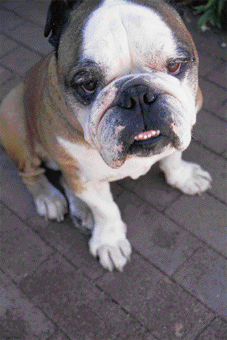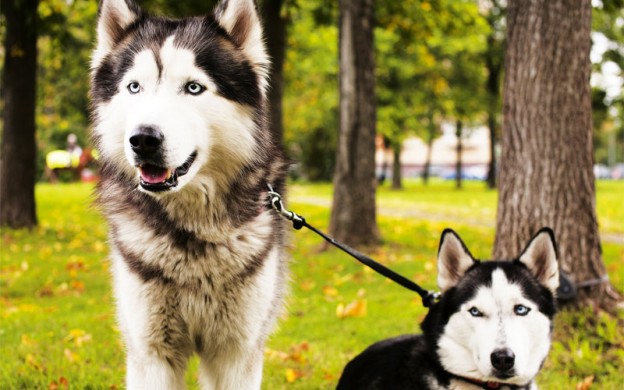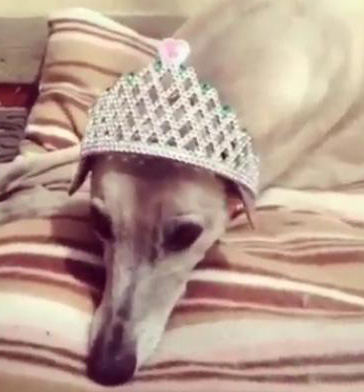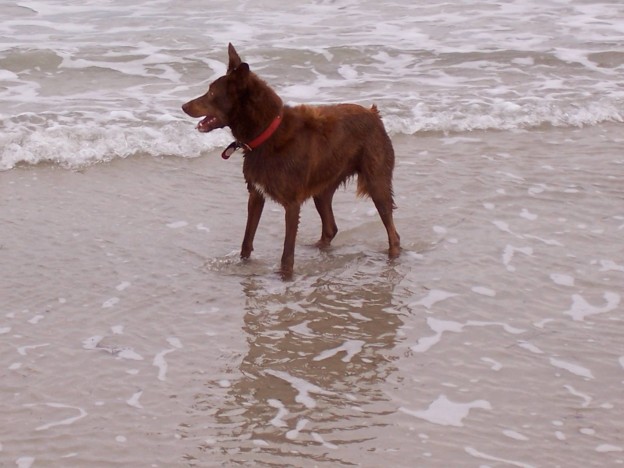
Caroline Zambrano examines the influence of the media when it comes to reporting on Breed Specific Legislation (BSL).
In the headline news…
“Pit Bull Attacks Mourners” BBC News Online, 15 January, 1998.
“Pit Bull Attacks Oakland Woman” San Francisco Chronicle, United States, 12 March, 2001
“Three Pit Bulls attack two-year-old Ottawa boy” CTV.ca (Canada), 2 February, 2005.
“Pit Bulls in three attacks” The Courier-Mail, Queensland, 3 May, 2005
As Breed Specific Legislation (BSL) began to spread more than a decade ago from Europe to the rest of the world, so did stories of dog attacks in the international media.
Dogs Life wonders if the media had refrained from publishing news of only Pit Bull attacks and disseminated pictures of children playing amongst these breeds, would Australia be targeting specific breeds in controlling dangerous dogs today?
In Australia, breeds banned from importation are the American Pit Bull Terrier or Pit Bull Terrier, Japanese Tosa, Dogo Argentino and Fila Brasileiro.
Many organisations and individual dog owners in the country argue that the media plays a big role in creating a misconception about breeds. International animal behaviour experts encourage the public to educate themselves better on the facts behind dog attacks.
Endangered Dog Breeds Association (EDBA) president Linda Watson said the media is not reporting the truth about dog attacks so dog lovers need to do their own research about certain breeds.
Since it started in 2001, the EDBA works with more than 200 members to provide the public with evidence, advice and alternatives to BSL and also to counter misinformation and hysteria about dog breeds and dog attacks promoted by the media and other anti-animal welfare organisations and governments.
“The media sensationalise dog attacks and at the moment seem only to publicise those involving Pit Bull type dogs or dogs they can convert into Pit Bulls,” Watson said. “Dog lovers need to educate themselves and understand particular breeds. Targeting breeds is unfair and irrational.”
The truth about dog attacks
Veterinarian Dr Kersti Seksel, the only registered specialist in animal behaviour in Australia, said statistics reveal dangerous dogs represent less than one per cent of the dog population recorded on the NSW Companion Animal Register and only half of these were involved in an attack on a person.
Moreover, she said the American Veterinary Medical Association Task Force on Canine Aggression and Human-Canine Interaction declared dog bite statistics do not give an accurate picture for a variety of reasons associated with the data actually collected, such as misidentification by the victim and the media upon reporting.
“They noted that large breeds are typically identified as problem dogs whereas smaller breeds may bite as much or more, but the injury is less substantial and may therefore not be reported,” Seksel said.
Also president of the Animal Companion Animal Council (ACAC), Seksel submitted such information in a government commissioned report to the NSW Department of Local Government in 2002 on BSL issues relating to control of dangerous dogs. (This report is available online by the Department of Local Government on www.dlg.nsw.gov.au, titled “Companion Animals Report to the NSW Department of Local Government on Breed Specific Legislation Issues Relating to Control of Dangerous Dogs”.)
Seksel argues in the report that breed alone is a poor indicator of aggression towards humans and as a consequence, there is no clear evidence to justify discriminating against particular breeds within legislation.
The media suggests the opposite, as all of Australia read in ABC Onlines article (published 3 May, 2005) about former NSW Premier Bob Carr describing Pit Bulls as “killing machines on a leash” before announcing a ban on the breed.
Interesting how ABC Online did not mention what Dr Seksel learned about American Pit Bull Terriers when she examined 20 of them that had been bred for fighting, at a kennel in the USA, where she worked as an animal behaviourist.
“Pit Bulls were not bred to attack humans, only to attack dogs,” she said, adding that at the kennels she observed no signs of aggression towards humans, but some, if expressed, directed toward other dogs.
“Media plays a big role in creating a misconception about breeds in Australia,” Seksel said. The media also has an effect on the popularity of certain breeds, she said. Many years ago, Rottweilers were considered dangerous and then Dobermanns took their place in the headlines. Now its the Pit Bull. Who knows, maybe in a few years it will be the Australian Cattle Dog”.
Dog Watch Campaign under media attack
As coordinator of Queenslands Dog Watch Campaign (a subsidiary of Cairns Health Action group), Carolyn Flute knows all about the medias attitude towards dog attacks.
In fact, her Dog Watch group was called “an extremist pressure group” by the local newspaper.
Flute started the campaign five years ago after witnessing a man being attacked by her neighbours Cattle Dog X. To her horror, Bevan Longs wife, Cheryl, had been attacked and hospitalised from severe injuries by the same dog just the week before. Flute said Mrs Long complained later about the dog continuing to roam the street and that she felt intimidated by the owner.
The driving force behind the campaign was the fact that council officials were not discussing how the incidents had been officially handled. It was only months later when officials revealed the dogs owner was fined the maximum fine of $150 for each attack and directed to erect a more secure fence, with which the owner took six weeks to comply.
Flute said the lack of monitoring and inappropriate fines suggested a need for a re-evaluation of the outdated penalty regime.
“I thought that was unacceptable,” she said of the councils failure to deal with the publics concerns in an accountable fashion. “When authorities consistently fail to discharge their duties and responsibilities fairly and with professional integrity, and neglect to lobby for reform on matters important to the people, then the people will challenge their accountability.”
Scarred in the face by the horrible attack, Cheryl Long became the poster girl for the Dog Watch campaign, creating quite a stir among the media as she appeared on TV, radio and current affairs programs. Meanwhile, public meetings were organised with the Cairns council to address the problems associated with irresponsible dog ownership that led to dog attacks.
Flute said the Dog Watch Group wanted “animal owners to be held automatically and absolutely responsible for the animals in their care”, not a ban of certain breeds. She submitted a report to the Queensland Legislative Assembly in November 2000 pushing for a review of the 75-year-old Animal Protection Act and the enacting of uniform regulations at all levels of government.
The report also urged mandatory training programs for owners who have been proved irresponsible and the introduction of pet education programs in schools, among other things, to encourage responsible dog ownership.
“BSL is a lazy option and not sufficient if we want to reduce the number of adverse events that cause injury and suffering to people and animals alike,” she said.
The campaign soon began to kick up a fuss amongst some dog owners, especially Pit Bull breeders, as they thought the Dog Watch Group wanted to ban the breed.
Flute said her campaign efforts were misconstrued by the media; one local newspaper editor wrote the Dog Watch Group was an “extremist pressure group”.
The ongoing negative publicity became stressful and financially costly for Flute, who said she would have “never become involved with the campaign if the council had acted properly in the first instance”.
How were Cheryl and Bevan Long affected by the ordeal? Flute said they were also under an enormous financial and emotional strain. The councils poor response aggravated their stress and the cost of suing for damages was beyond their means. “It nearly destroyed them as a family,” said Flute.
Cheryl Long had to face the media repeatedly and although she and Carolyn Flute worked very hard to ensure TV and newspaper journalists understood the real issues, “we were disappointed because the cutting room editors preferred to emphasise the sensational aspects of the story”, said Flute.
What’s more, Flute was unaware that at the time of her campaign, breed specific legislation was being considered at a higher level by the Queensland government. She does not know how much consideration her campaign and reports had when it came to passing the legislation.
“Dog owners should be automatically and absolutely responsible for animals in their care. The right to own a dog should not be regarded as a fundamental right unless one is prepared to take out a permit and ensure the proper facilities are in place.”
Senator admits media affects public opinion in BSL
Queensland Senator Andrew Bartlett knows well the power of the media as he is regularly in the limelight as a member of the Australian Democrats. Senator Bartlett told Dogs Life there is a tendency for certain frenzies to build up in media coverage, which create a distorted perception of reality.
Former president of Animal Liberation Queensland, Senator Bartlett does not have a hard and fast view on breed specific legislation due to a range of competing arguments on the subject, but he admits his perspective has been shaped to some extent by media reports.
Senator Bartlett said he understands that “blanket condemnation of particular breeds does not give a fair picture” as he was once the proud owner of a dearly loved and very gentle Rottweiler.
“I agree the way an owner treats a dog is far more likely to influence that dogs behaviour than the breed of the dog,” he said. “However, there does seem to be some evidence that certain breeds are more likely to attack children and adults, and that can’t be ignored.”







